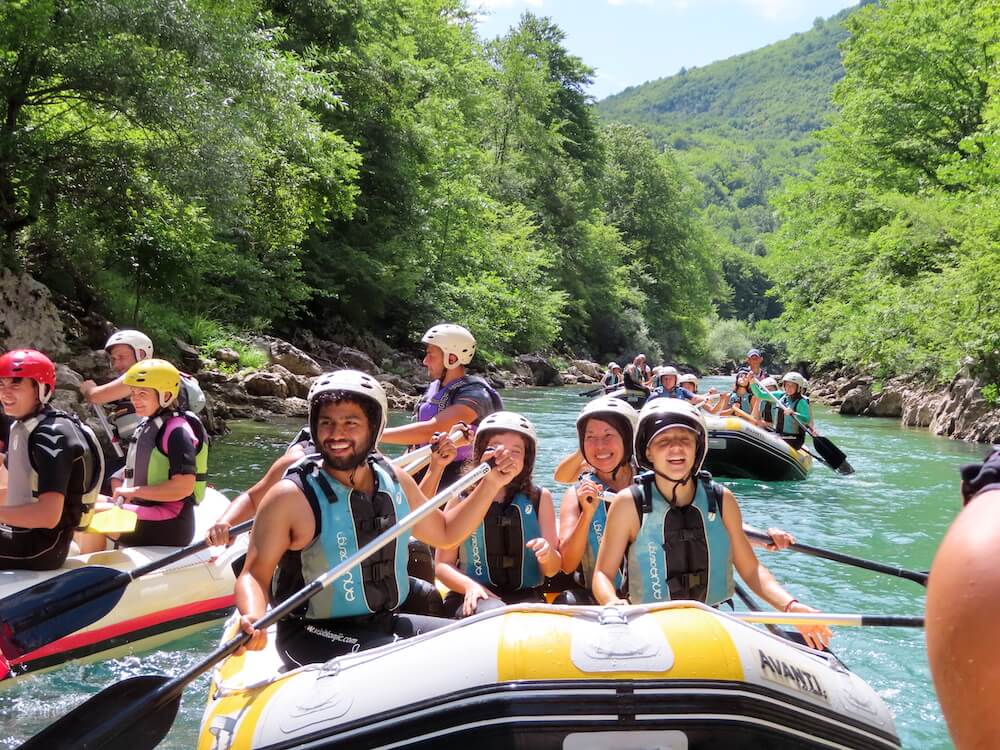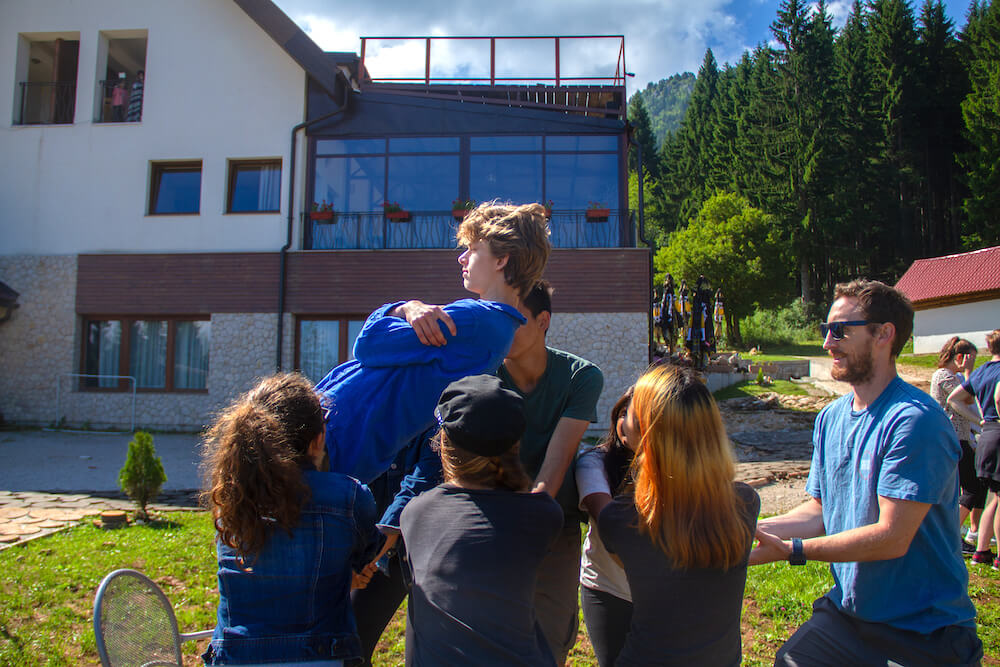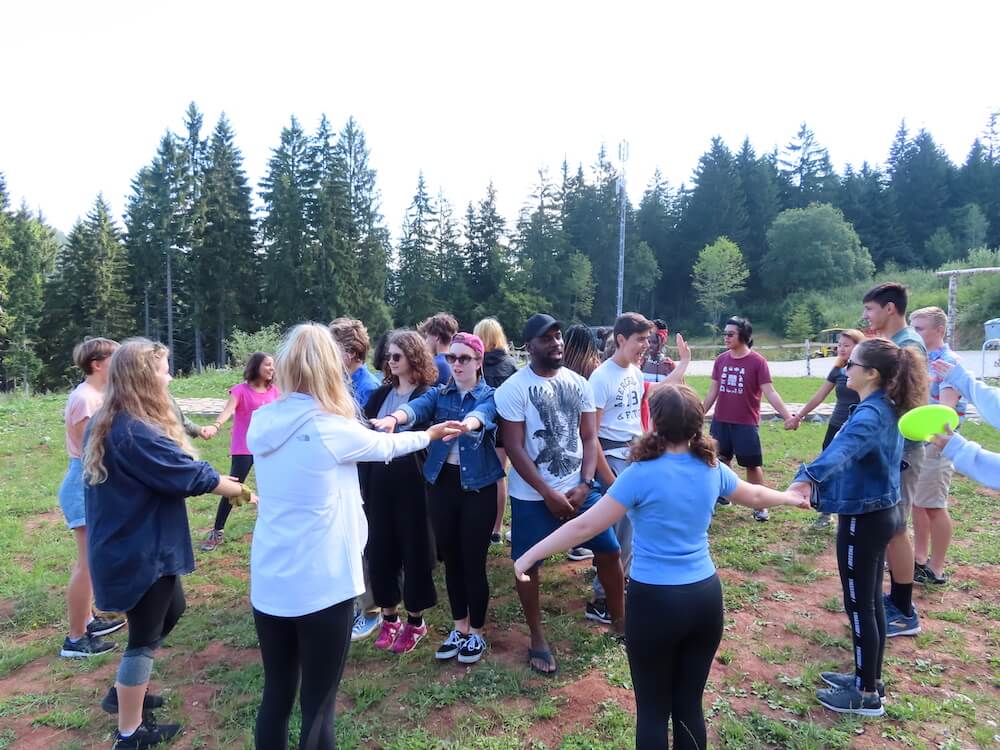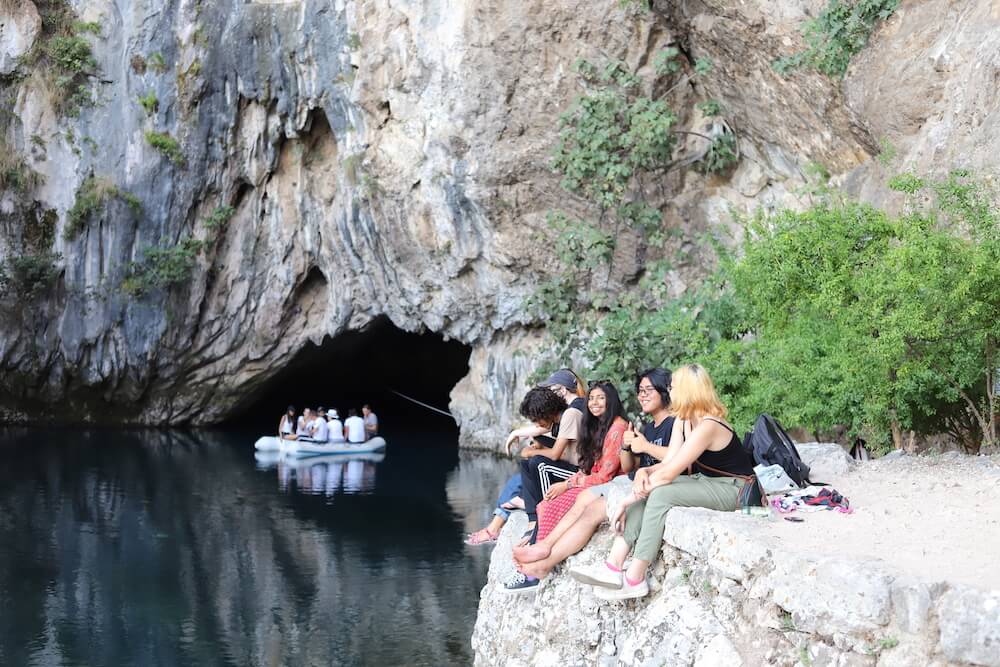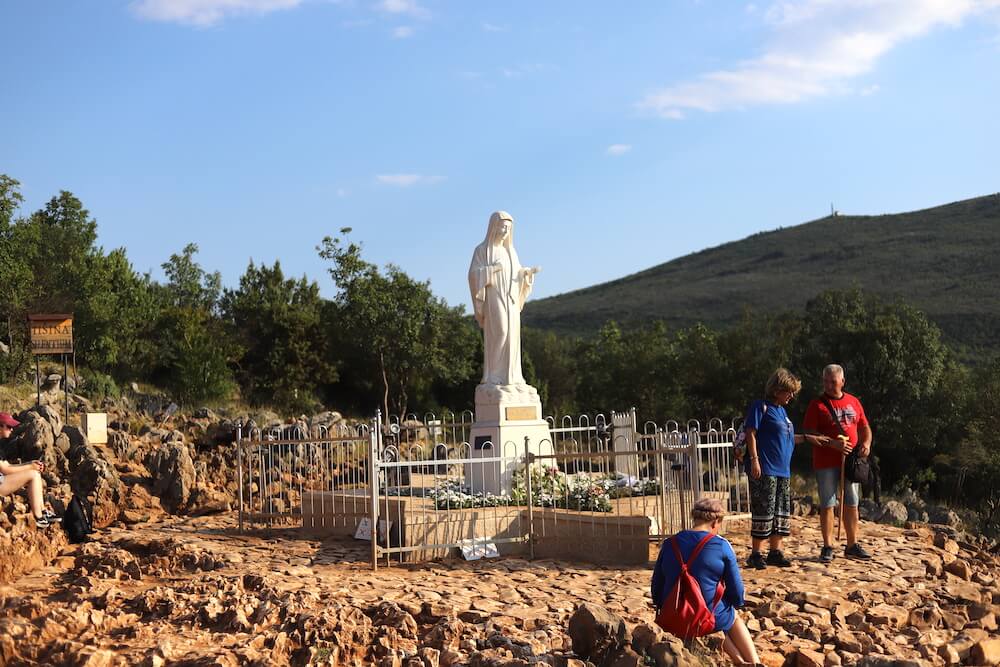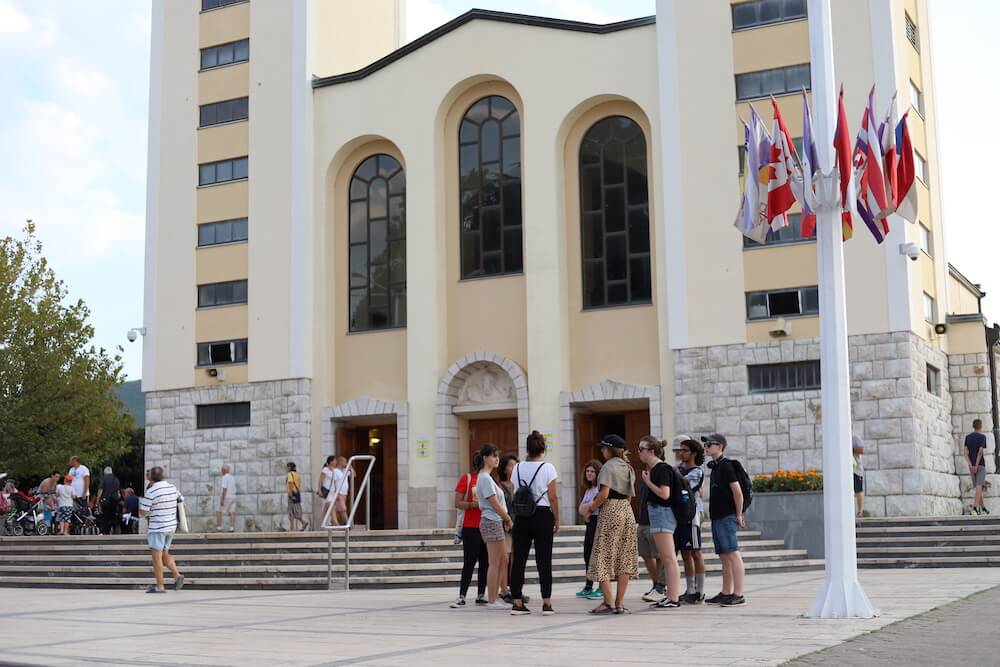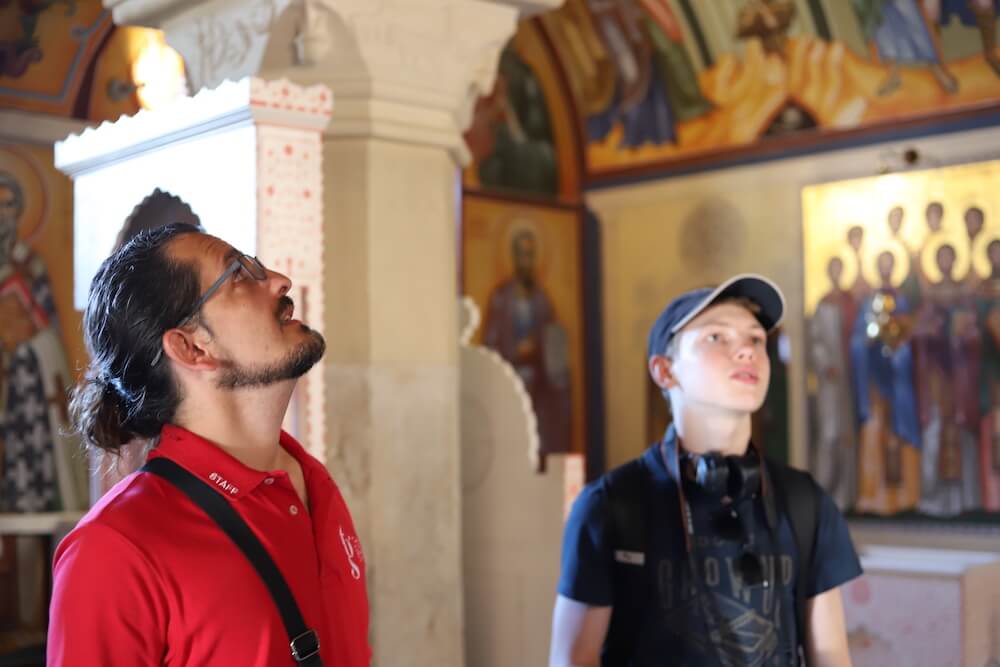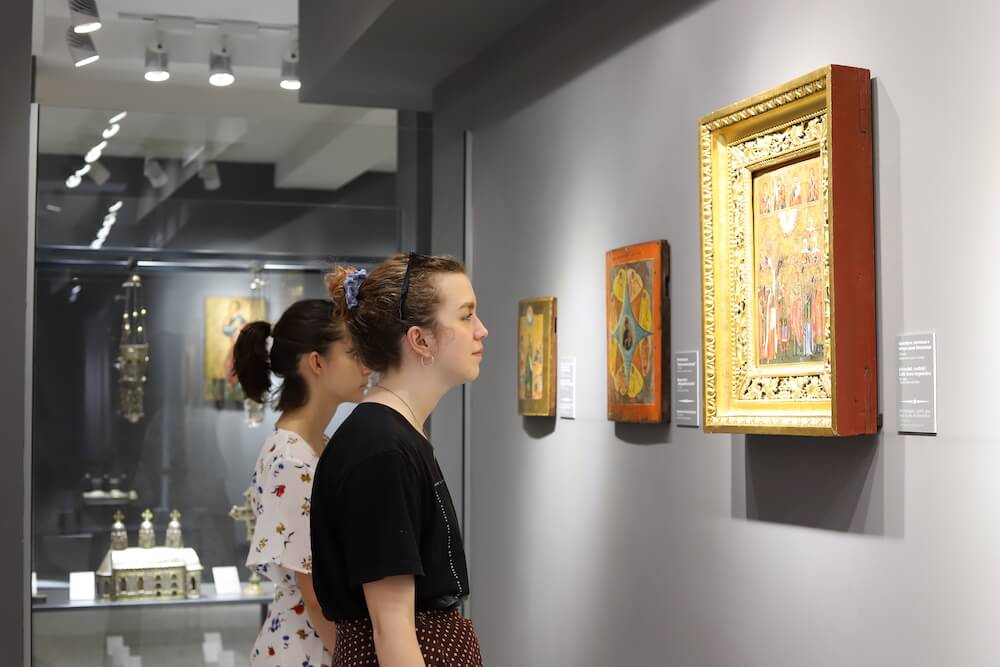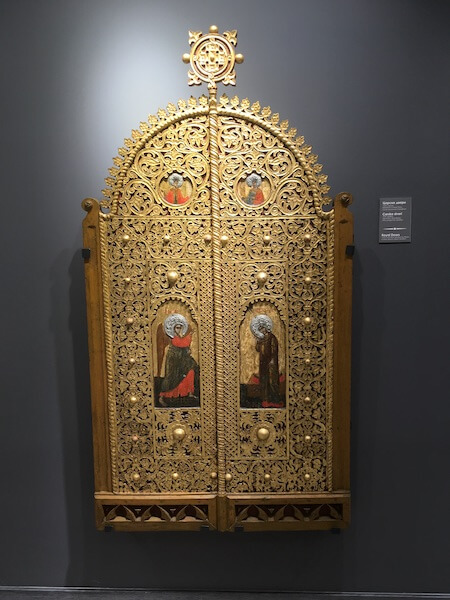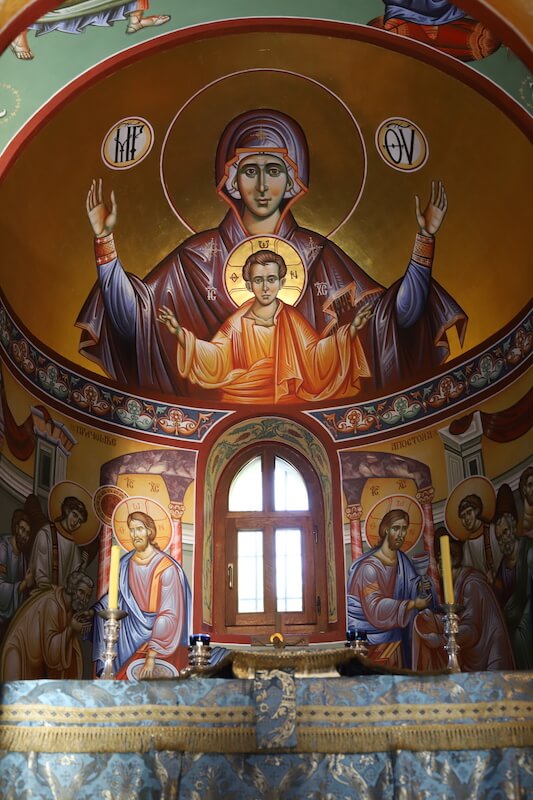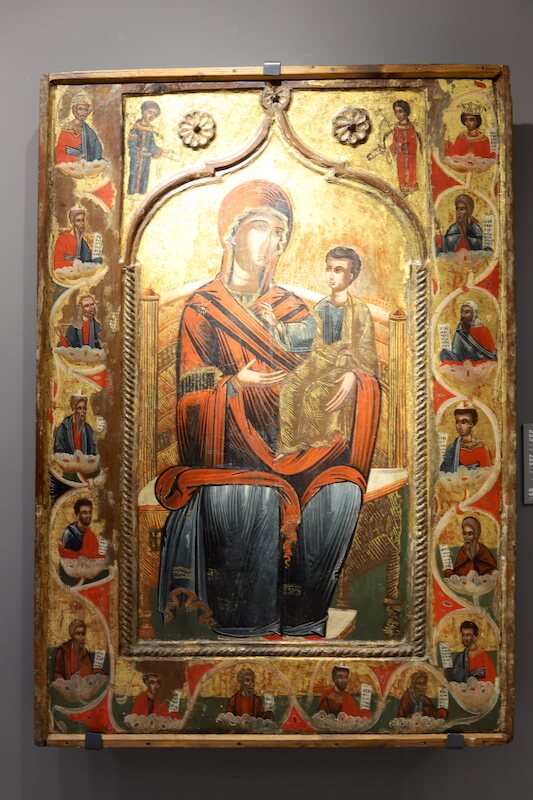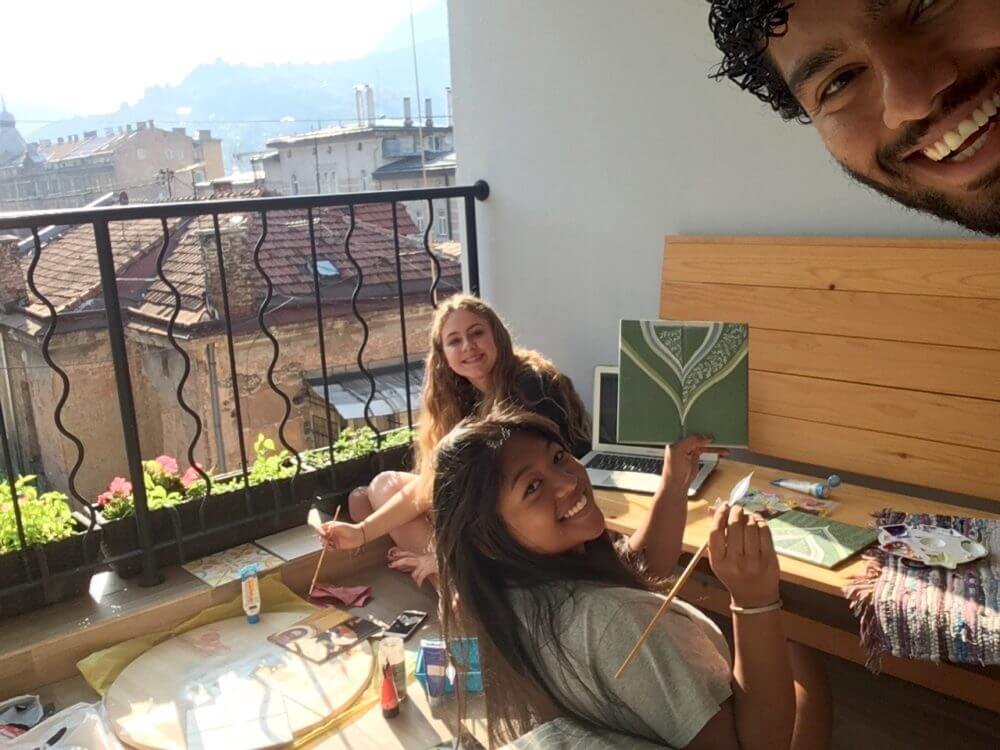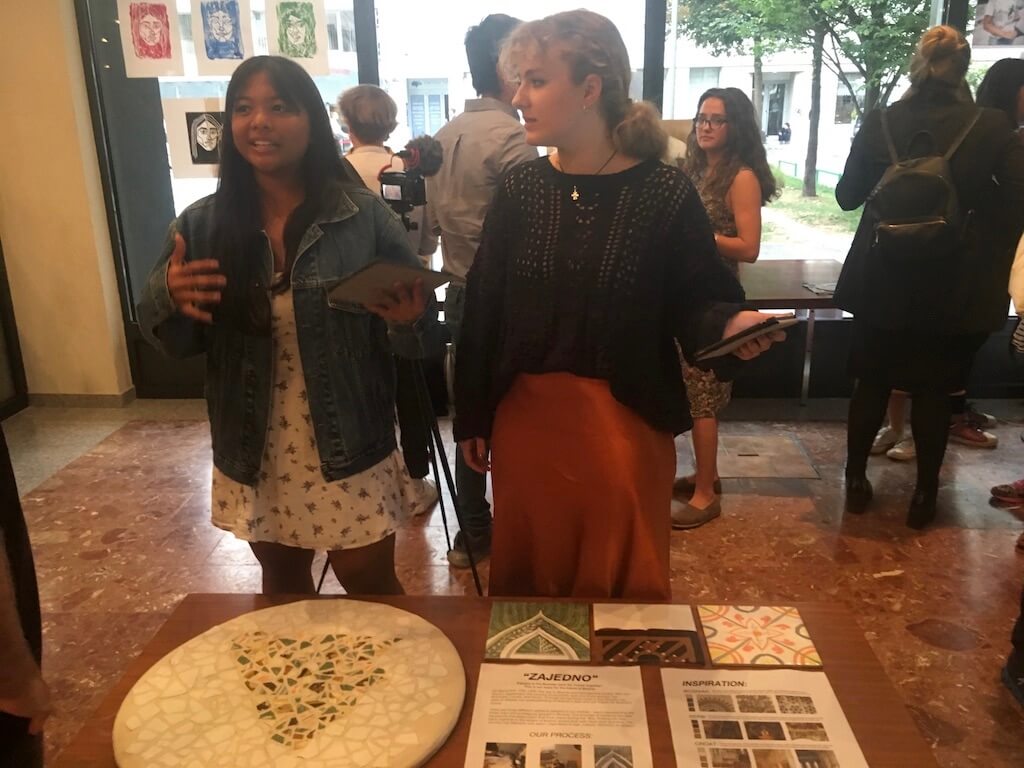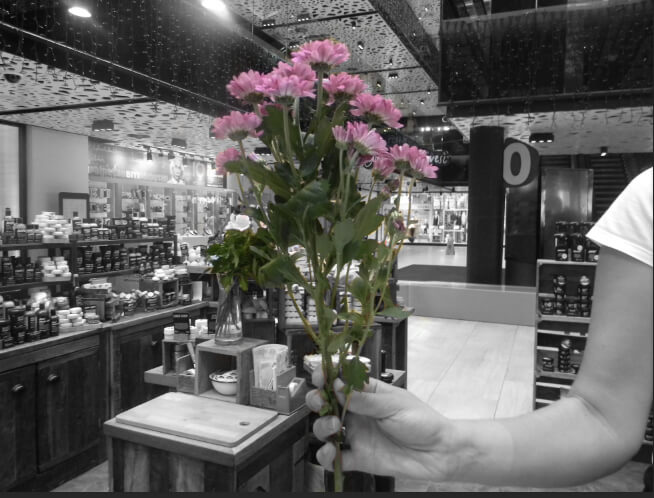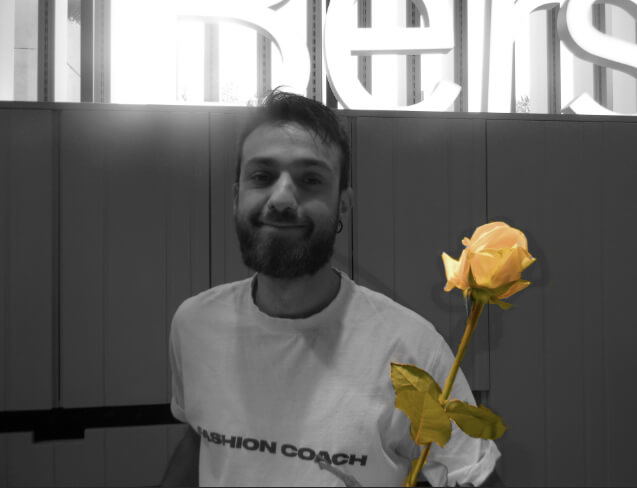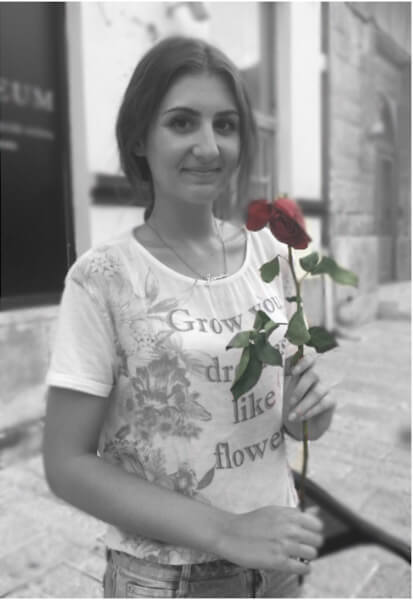Are you interested in applying to THINK Global School but aren’t quite sure if it’s right for you? That’s OK! It’s a decision that shouldn’t be taken lightly. To help you in your application process, we’ve put together a list of five things we feel every applicant to THINK Global School should know. We hope you find them helpful. 1) You’ll gain an education by living and learning in the...
Read MoreFollowing their ten day Rite of Passage in Northern England, our new students joined returning CM1 students in Sarajevo, Bosnia and Herzegovina, for the first term of the 2019-20 school year. During their time in BiH, students lived in the heart of Sarajevo’s Old Town, Baščaršija. One of Europe’s best kept secrets (although that secret is getting out), Sarajevo is always popular with our students, and they enjoyed finding chic new cafes nestled among Baščaršija’s well-preserved Ottoman Empire and Austro-Hungarian buildings.
As an added bonus, the weather this term was incredible, providing ample opportunities for us to focus on wellness and team-building through activities like white water rafting on the pristine Neretva river. With many new students among our ranks, it was an incredible way to start the year and establish camaraderie.
Module Work: Reconciliation in Bosnia & Herzegovina
This term, all of our CM1 students participated in the same module, a deep dive into the topic of reconciliation — a necessary and ongoing process nearly twenty years after the end of the Balkan Conflict.
Students divided into module groups to research and create a product of their choice based on the concept of reconciliation. At the start of the project, they were asked to consider the following driving question: How can we convey the complexities of ethnic and religious reconciliation through our experience of Bosnia and Herzegovina?
With this question in mind, each group of students began considering how they wanted to demonstrate their learning. At THINK Global School, autonomy is a core component of our curriculum, and we encourage our students to explore their passions while considering their module work. The Reconciliation project in particular provided a lot of flexibility for our students to demonstrate what they had learned, with some turning to traditional art forms like mosaic assemblage and poetry while others used their video-editing skills to create short films. No two projects turned out the same, but each was a labor of love that revealed a deep understanding of what our students had learned. Examples can be found at the bottom of this post.
In the process of designing their project, CM1 students visited religious institutions, studied texts that recount the history of conflict within BiH, reflected on stories told through personal and impersonal means, and met with guest speakers from various backgrounds to explore the successes and challenges of the reconciliation process.
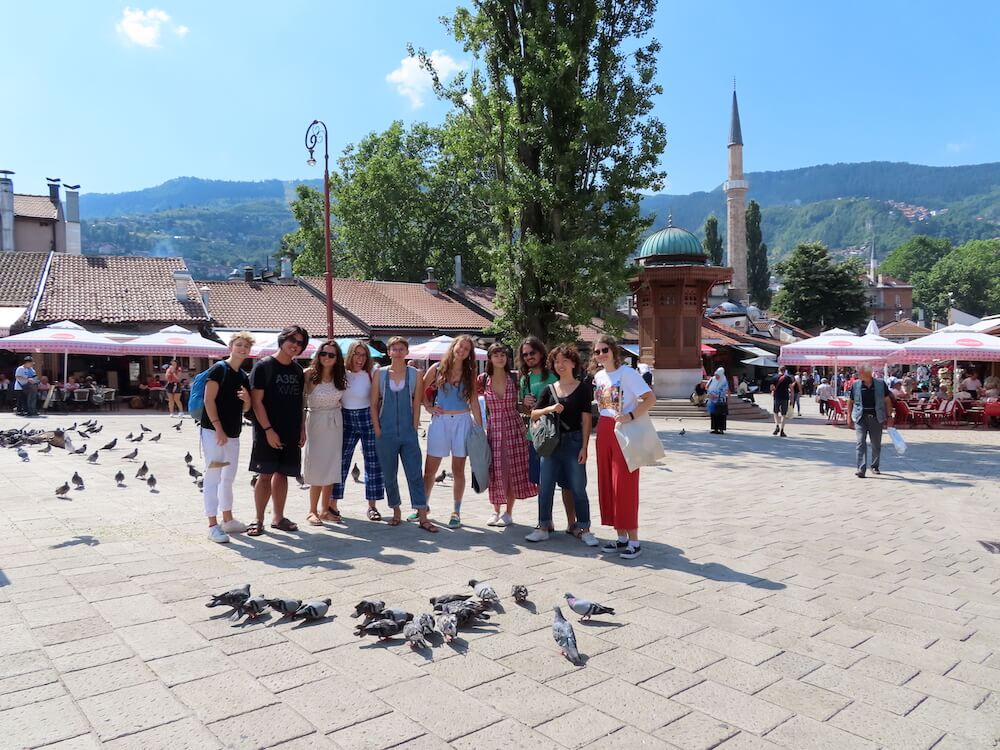
Seniors tour Sarajevo with Principal Adnan Mackovic
In Sarajevo, students attended a seminar with an inter-religious council consisting of a Jewish man and Muslim woman. A non-governmental organization, the Interreligious Council works with local leaders of Bosnia’s four major religions to build awareness of each other’s beliefs, customs and practices and to foster joint activities at the local level.
Students received an overview of how the council works, and according to Class of 2022 student Malak A., it was amazing to see various religions come together in harmony, especially in an area that was so devastated by ethnic conflict, which presents another key takeway for her: the war was not fought in the name of religion but along ethnic lines.
As part of their module work, students also had an opportunity to visit religious sites from the three main religions in Bosnia & Herzegovina: a Muslim mosque, an Orthodox church, and a Catholic church. During these guided tours, students were asked to compare and contrast the differences and similarities that they witnessed in all three and apply them to their final projects. Lexie and Gigi, for example, took notes on the dominant colors in each house of worship and applied them to their mosaic project.
In Sarajevo, students also visited the historical museum of Bosnia and Herzegovina, where guest speaker Professor Amir Duranovic spoke on the key causes of the Bosnia War and post-war challenges faced by the country.
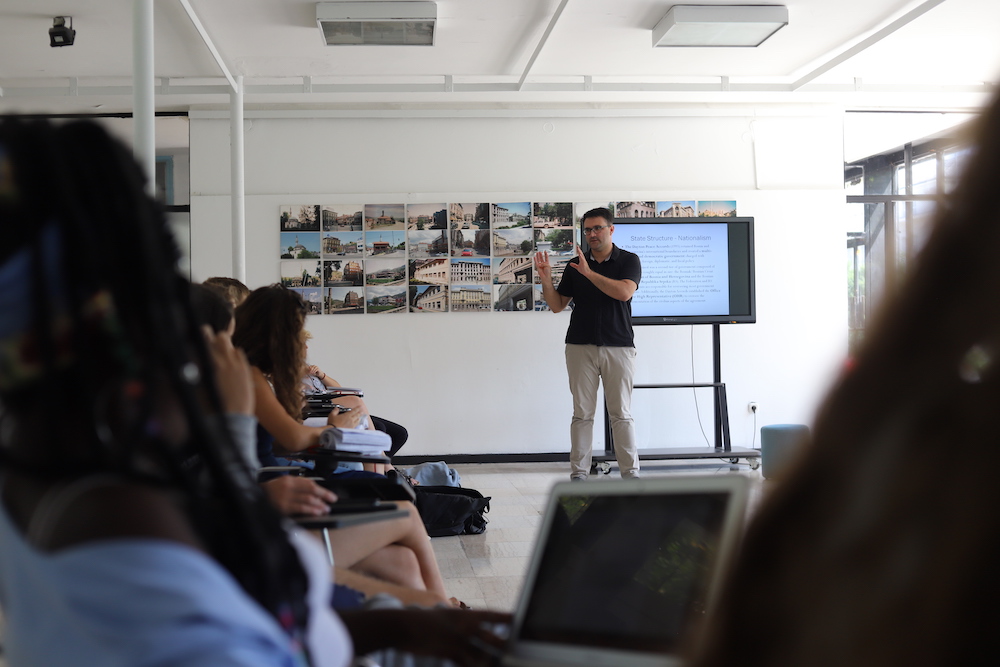
Professor Duranovic speaks to students
Srebrenica Visit
To gain a firsthand perspective of the deep complexities and difficulties associated with reconciliation in the region, students traveled to Srebrenica for a day to learn more about the massacre that took place there, which resulted in the loss of more than 8,000 Muslim men and boys — the worst European massacre since World War II.
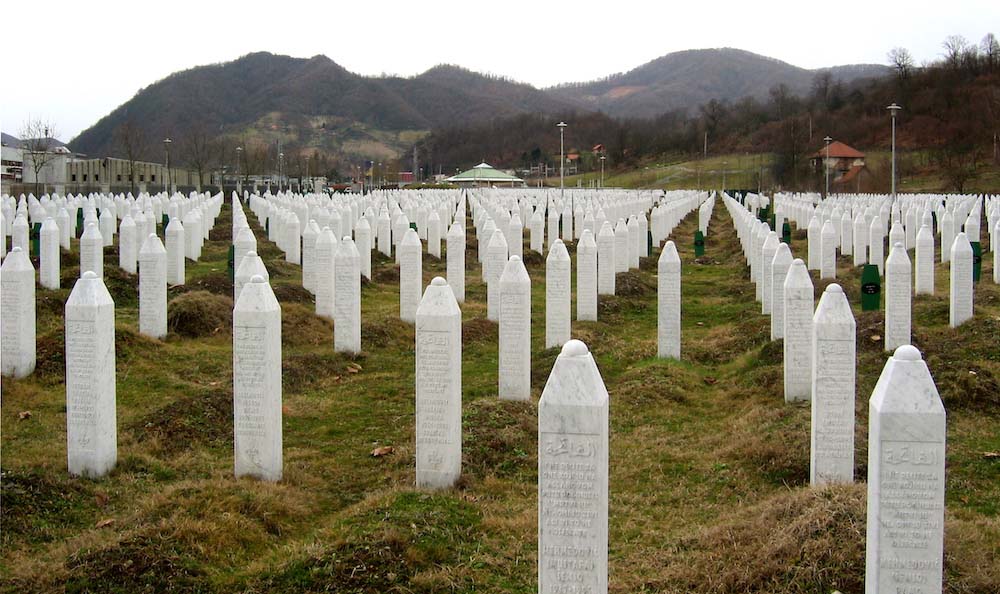
Image Credit: Michael Büker
Students started the day at the Srebrenica-Potocari Memorial Center & Cemetery, where they witnessed videos and imagery that shared unfiltered views of the grim realities of the conflict, and spoke with a local Bosniak survivor, Hasan Hassanovic, about his experiences. Despite everything that he endured during the Balkan Conflict, Hasan, like many others that our students met, says that he does not hold any hate in his heart and truly believes that reconciliation is possible, albeit there is a lot of work to be done.
Class of 2021 student Gigi shared this on the encounter:
“Listening to Hasan and his story was thought-provoking in almost every possible way. It was hard for me to imagine having to go through all that struggle at the age of 19. When he mentioned having to bury his twin brother and father due to the war, I felt a mixture of grief and admiration. I can only imagine what it takes to be able to speak about such a traumatic experience so often. It was so powerful when he said that he was not going to sink down to that level of hatred towards the people that have caused him harm. And in this way, he believes he has won the war.“
Following their conversation with Hasan, students had the opportunity to meet with several non-governmental organizations who are focused on the future of Bosnia and Herzegovina, and doing positive work in the community. They included:
- Emmaus NGO Srebrenica: EMMAUS, who help youth, the underprivileged, and the elderly in Srebrenica, strongly believes that having integrated community service not only benefits Srebrenica from an infrastructure standpoint, but it also helps build connections that surpass ethnicity and religion.
Class of 2022 student Nila N., who is new to THINK Global School this year, shared this about Emmaus in her post-Srebrenica reflection:
“Something that I want to take away from EMMAUS is their kindness and willingness to aid Srebrenica in several ways. Whether it be through food programs and free student housing, or through connecting with mothers who lost their families during the war, I was inspired by their initiatives to help out the local community. I felt like they were a very wholesome NGO that provided help to those who needed, and who inspired reconciliation by teamwork and bonding.”
- Mothers of Srebrenica: An activist group committed to preserving the memory of those lost in the massacre. This sit down included mothers of sons and husbands who were brutally slaughtered in the Srebrenica massacre.
- Sara: Sara is an association based in Srebrenica that is dedicated to promoting the ideas of youth and women and advancing the living conditions for these groups. Our students had the opportunity to visit the Sara Headquarters and hear firsthand about the work that they do.
The Srebrenica visit turned out to be one of the highlights of the term, surprising students in a variety of ways. Class of 2020 student Amelie A. shared the following in her Srebrenica reflection:
“Overall I was surprised by the holistic and diverse picture I got of the conflict from just one day in Srebrenica, from our first times hearing from Serbs to people saying they think Bosnia has already achieved reconciliation. It’s so essential to think critically about everything that we hear, and construct a nuanced understanding of exactly what happened based on all the various perspectives we hear.”
Mostar weXplore
For their five-day weXplore, students traveled two hours southwest from Sarajevo to the historic city of Mostar. Here, they witnessed a city divided in two along ethnic lines, with Bosniaks residing in the eastern part of the city and Catholic Croats living on the westside of the Neretva river’s banks. During their time here, students engaged in a variety of place-based learning activities and were tasked with trying to understand how an “average person” sees the current situation in Mostar and the country as a whole.
The Mostar weXplore included the following activities:
- A Q&A with a Bosniak Imam and Catholic priest
- A conversation and chance to hear local music with Orhan Malso, Gabrijel Prusina and Antonija Batinić, who survived the war and founded the interethnic Mostar Rock School. They believe that culture is always ten years ahead of politics and inspired students with their community work and vision
- A day with Vernes Voloder from the Nansen Dialogue Center Mostar (NDC).

Two schools under one roof. Image credit: Laura Boushnak
One of the issues that makes reconciliation difficult is that Bosnia and Herzegovina still employs a “Two schools under one roof” policy at over 50 schools. In these instances, one side of the school will be attended by predominantly Muslim students while on the other Croatian Catholics attend. The Nansen Dialogue Center Mostar, which is partitioned in such a manner, is looking to change that by bring students from all ethnicities together to express themselves and coexist and step away from the discrimination they face.
Visits to Religious Sites
During their time in Mostar, students also had a chance to tour religious sites of particular importance to all three of the main ethnic groups. They begun with a visit to the Blagaj Tekke, Bosnia’s oldest Dervish monastery having been constructed in 1522. The Tekke holds particular religious significance to practitioners of Sufism, a mystical form of Islam in which Muslims seek to find the truth of divine love and knowledge through direct personal experience of God.
Following their visit to Blagaj, students visited Medjugorje (between mountains), a Catholic pilgrimage site where it is believed that the Virgin Mary appeared to a group of 6 children in 1981, and has continued to appear to the same group over the past decades. Medjugorje has become quite a pilgrimage site for Catholics around the world, but also Muslims and Orthodox Serbs as well. In 2019 the Vatican officially authorized pilgrimage to Medjugorje.
Finally, students visited Zitomislici, Herzegovina’s most important Orthodox monastery and also one of its oldest. It’s a place where Orthodox and Divinity schools were developed, and a place of important iconography to Serbs.
Learning Outcomes
As mentioned earlier in the post, each student was asked to answer the same driving question through their project work: How can we convey the complexities of ethnic and religious reconciliation through our experience of Bosnia and Herzegovina? With the question in mind, how they answered it was up to them with the approval of their advisor.
Below you can find a selection of our students’ summative assessments, the term we use to describe the final product resulting from their module work. These were presented at our end-of-term project-based learning showcase, which took place in Sarajevo on September 4th, 2019. Have questions about any of the projects? Email us at community@tgs.org to learn more.
Hanna, Guillermo, Julia, and Varvara show Bosnia’s growth through flowers
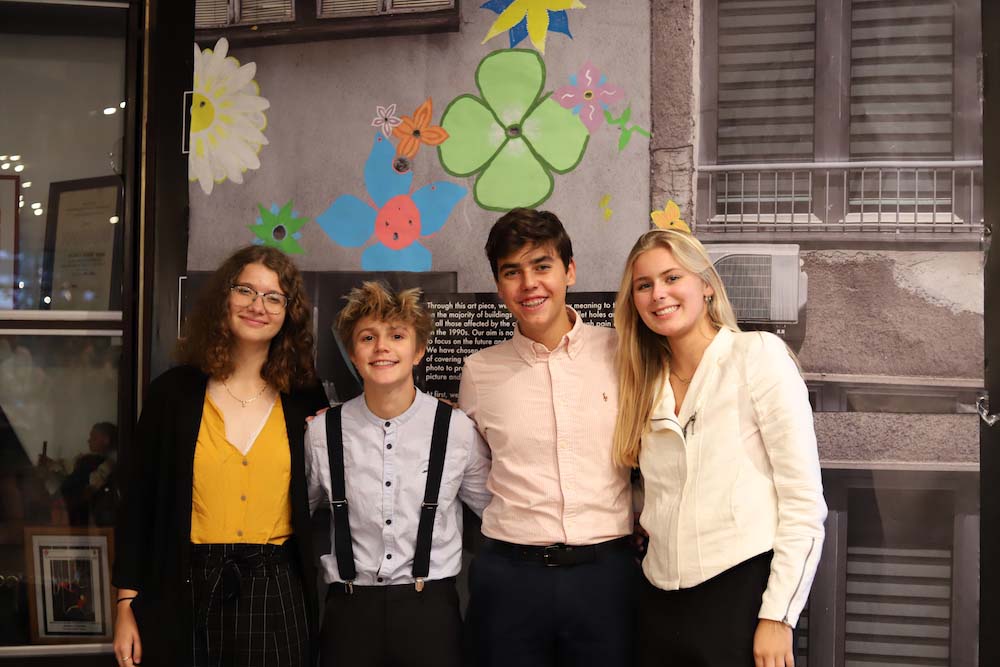
Julia, Vax, Guillermo, and Hanna
For their project, students Hanna, Guillermo, Julia, and Varvara wanted to give a new meaning to the bullet holes that riddle almost every building in Sarajevo. They aimed not to forget about the atrocities of war but rather to focus on the future and possibilities of change in Bosnia and Herzegovina. To do so, they focused on the learning target of Visual Literacy by painting flowers on top of canvas featuring a bullet-ridden building, looking to show growth out of the war.
In the process of their research, Guillermo and educator Ibrahim went around the city of Mostar snapping photos of existing bullet hole artwork to get a feel of how the project should be approached, and what should be avoided.
Color psychology also played a large role in portraying the meaning they wanted, and the designs the module team settled on featured bright hopeful colors, clear cartoonish lines, and are meant to produce happy, hopeful emotions.
Lexie and Gigi represent fracture and reconciliation through a mosaic
For their project, students Lexie and Gigi decided to tackle an art form that was new to them: crafting a mosaic. The project was filled with symbolism: the process of breaking the tiles represented the destruction that took place during the 90s. Putting the tiles back together in the shape of Bosnia showed that with hard work and time (and given that this was a new artform for the two of them, it required a lot of hard work and time), Bosnia can become one again, regardless of age, culture, ethnicity, or religion.
For their inspiration, Lexie and Gigi visited Bosniak mosques, Serbian Orthodox churches, and Croatian Catholic churches to gain an idea of what color tiles to use in the mosaic. They learned that green is a very important color in Islam and is Muhammad’s favorite color, that Orthodox churches are often very colorful, and that Croatian Catholic churches heavily feature whites and golds.
Once they had identified color schemes and prominent designs, they set about creating their own patterns based on what they had seen during their scouting process and featuring the colors mentioned above. Once the tiles were created, they were smashed into pieces (90s destruction). Next, they combined the colored pieces with white tiles to form the outline of Bosnia and Herzegovina. To finish the piece, Lexie and Gigi grouted the gaps and glossed the top to make everything shine.
Amelie, Ryleigh, and Tex: The Power of 3s
According to Class of 2020 student Ryleigh I., a lot of the Reconciliation module was about listening: listening to recalls of history, stories of war, and personal narratives. By listening to these different voices and their dreams for Bosnia’s future, they were able to gain a deep understanding of the conflict and complexities of reconciliation.
For their project, the Power of 3s, Ryleigh, Ignacio, and Amelie strived to use the idea of humor as a means of reconciliation, and to use the common love of laughter to their advantage. One of the main sources of inspiration for their project came from Top lista nadrealista (The Surrealists’ Top Chart), a sketch comedy tv show that aired in Yugoslavia between 1984 until 1991, including during the Yugoslav War. The popular show accomplished exactly what Ryleigh, Amelie, and Ignacio were setting out to do: using humor to tackle politically sensitive material in a way that resonates with the viewer and causes them to laugh, providing a respite from their bleak circumstances.
Before filming the video, the group did extensive research into understanding humor through the Bosnian lens, turning to articles, academic papers, and picking the brains of their Bosnian classmate Varvara and Bosnian principal Adnan Mackovic. Through their research, they settled on using ‘benign violation,’ a technique within comedic theory that enables taboo subjects to be discussed in a manner that feels safe. In terms of skill mastery, editor Amelie A. focused on story flow, structure, shot variety, and sound design, and clear improvements can be see in her technique here compared to earlier projects at THINK Global School.
Nila and Effie use the power of slam poetry to tell a story
For their summative assessment, new students Nila and Effie decided to create a slam poem to represent the three complex narratives they had come into contact with during their time in Bosnia and Herzegovina.
To accomplish this, Nila and Effie wrote a poem based on their understanding of the war. The poem shares anonymous stories from a survivor, a soldier, and a NATO operative they encountered during their time in BiH, followed up by measures dedicated to the importance of reconciliation after war. You can listen to the final version of their slam poem below.
Malak uses photography to convey a message
For her summative assessment, Class of 2021 student Malak B. went an artful route by working on a series of pictures of Bosnian strangers each holding up a flower representing a value that they believe leads to reconciliation along with a description of why they hold that belief. The end project demonstrated how different people in Bosnia and Herzegovina hold different views on reaching reconciliation, but in the end, no matter their ethnicity, everyone strives towards the same goal.
